Exploring Greenbrier Smilax: A Unique Plant in Nature
Table of Contents
Introduction
Greenbrier Smilax is a unique plant that often goes unnoticed by many people. It’s part of the Smilax family and is known for its thick, green vines that climb trees and other plants. Although it has sharp thorns, this plant plays an important role in nature. Whether you’re hiking through a forest or strolling along a nature trail, you might come across Greenbrier Smilax without even realizing it. It grows in various habitats, from forests to wetlands, and has many interesting features that make it stand out in the wild.
What makes Greenbrier Smilax truly special is its ability to climb. The vine wraps itself around trees and shrubs, reaching for the sunlight above. Despite its sharp thorns, which might seem dangerous, the plant has a gentle role in the ecosystem. It provides shelter and food for a variety of animals, including birds and small mammals. The berries it produces are also enjoyed by many creatures, especially during the colder months when food is scarce.
In this blog post, we will explore the many aspects of Greenbrier Smilax, from how to identify it to its importance in nature. We’ll look at where to find this interesting vine, what makes it so unique, and how it helps the environment. Whether you’re a nature enthusiast or just curious about plants, learning about Greenbrier Smilax will help you appreciate this amazing plant more. Let’s dive in and discover everything there is to know about Greenbrier Smilax!
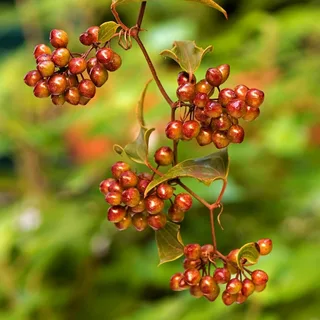
What is Greenbrier Smilax? Understanding the Basics
Greenbrier Smilax is a fascinating vine that belongs to the Smilacaceae family. It’s known for its ability to grow tall and spread across large areas, often climbing up trees and other plants. This plant has thick, green leaves that shine under the sunlight, and its vines can reach impressive lengths, sometimes growing up to 20 feet or more. Greenbrier Smilax is also called “catbrier” in some regions, which comes from the sharp thorns that line its stems. These thorns help the plant to latch onto trees and shrubs, allowing it to climb higher to reach sunlight.
The plant is a deciduous vine, meaning it sheds its leaves in the fall, but it is hardy and can grow back each year. It has a thick, tough structure, which makes it able to survive in a variety of environments. Greenbrier Smilax doesn’t need a specific type of soil to thrive. It can grow in moist areas, like near streams, or even in drier spots, like forests or fields. This flexibility in where it can grow makes it an adaptable plant that can survive in many conditions.
One of the most noticeable features of Greenbrier Smilax is its sharp thorns. These thorns can make it difficult to pass through areas where the vine is growing, as they can scratch and prick anyone who comes too close. However, these thorns serve an important purpose. They help protect the plant from animals that might try to eat it. While the thorns can be a bit of a nuisance to people, they are a key part of the plant’s survival strategy.
In the spring and summer, Greenbrier Smilax produces small, greenish flowers, which are not very showy but important for attracting pollinators like bees and butterflies. These insects help pollinate the plant, enabling it to produce berries later in the year. The berries are small, round, and dark in color, providing food for birds and other wildlife. This makes Greenbrier Smilax an important part of the food chain in its natural habitat.
Greenbrier Smilax is more than just an interesting plant to look at; it plays a vital role in the ecosystem. Its ability to climb allows it to cover large areas, protecting the soil beneath it from erosion. It also provides shelter and food for various animals, making it a valuable resource in the wild. Despite its sharp thorns and climbing nature, Greenbrier Smilax is an important and fascinating plant that contributes to the biodiversity of the environment it grows in.
Where to Find Greenbrier Smilax in Nature
Greenbrier Smilax is a hardy plant that thrives in a variety of habitats, making it easy to spot in many different regions. One of the most common places to find this vine is in forested areas. Whether it’s a dense woodlands environment or a more open forest, Greenbrier Smilax can be found climbing trees and shrubs. It tends to grow in areas with plenty of shade, especially during the warmer months when the sun can be intense. The plant enjoys moist conditions but can also adapt to slightly drier environments, which is why it can be spotted in so many different places.
You can also find Greenbrier Smilax near water sources like rivers, streams, and wetlands. The plant loves the moist, nutrient-rich soil that these areas provide. Whether it’s growing along the banks of a stream or nestled by a river, Greenbrier Smilax thrives in these damp, fertile environments. Its long vines often stretch across the water or climb nearby trees, blending in with the natural landscape. The humidity and water from these areas help the plant grow healthy and strong.
In addition to forests and wetlands, Greenbrier Smilax can be spotted in fields and along trails. It often grows in areas where the ground is not overly dry but still receives plenty of sunlight. You may find it creeping up along fences, old stone walls, or abandoned farmland. Greenbrier Smilax does well in disturbed areas where the soil has been disturbed, as it can quickly take root and spread. It is often seen climbing along edges of trails, making it an easy plant to spot during a hike in the woods or through overgrown paths.
Greenbrier Smilax also has a wide range of geographic distribution, meaning it can be found in many different parts of the world. In North America, it is common in the eastern and southeastern regions, particularly in states like North Carolina, Alabama, and Kentucky. The plant is native to these areas and has adapted well to the climate and soil conditions. You might also find Greenbrier Smilax in parts of Central America, depending on the specific species. Its adaptability to different climates makes it a plant that can survive in various environmental conditions.
While it’s not typically found in urban areas, Greenbrier Smilax is often seen in rural and suburban environments. It can grow in parks, nature reserves, and even along roadsides. If you are walking in a natural area with some moisture and shade, keep an eye out for this unique vine. Its green, glossy leaves and thick, twisting vines make it stand out in the wild. So, whether you’re in a forest, wetland, or along a nature trail, there are many places to find Greenbrier Smilax thriving in its natural environment.
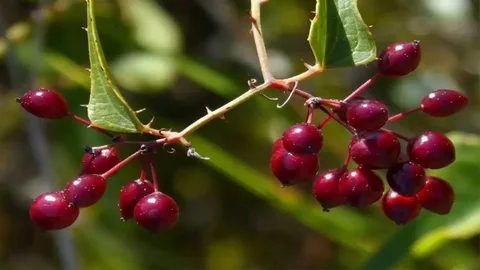
The Characteristics of Greenbrier Smilax: What Makes it Unique?
Greenbrier Smilax is a plant that stands out due to its striking features and unique characteristics. One of the most noticeable things about this plant is its thick, green vines. These vines are not only long but also flexible, which allows them to climb and spread over large areas. The plant’s ability to cling to trees, fences, or other structures using its strong tendrils is a key feature that makes it different from many other plants. The vines can reach lengths of up to 20 feet or more, giving it the ability to cover and wrap around trees, creating a dense, green layer that is easy to spot in nature.
Another characteristic that makes Greenbrier Smilax unique is its sharp thorns. These thorns line the stem and help the plant climb by gripping onto trees and shrubs. Although the thorns might seem intimidating, they serve an important role in protecting the plant from animals. The thorns act as a defense mechanism, discouraging herbivores from munching on the plant. These sharp spikes can also make it difficult for humans to move through areas where the vine is thickly grown, but they are vital for the plant’s survival in the wild.
The leaves of Greenbrier Smilax are another distinguishing feature. They are typically thick, shiny, and dark green, which makes them stand out against the lighter background of the forest or field where it grows. The leaves grow alternately along the vine and are often heart-shaped or oval. These large leaves help the plant capture sunlight for photosynthesis, which allows it to grow so quickly and spread across the landscape. The green color also makes the plant blend into its environment, helping it stay camouflaged and avoid being noticed by predators.
In the spring and summer, Greenbrier Smilax produces small, unassuming flowers. These flowers are not showy but are an important part of the plant’s reproductive cycle. The flowers are usually greenish-white and attract pollinators like bees and butterflies. These insects help the plant spread its pollen, which results in the production of berries later in the year. While the flowers are not as bright and colorful as those of some other plants, they are crucial to ensuring the next generation of Greenbrier Smilax.
One of the most significant features of Greenbrier Smilax is its ability to provide food and shelter to various wildlife. The plant produces small, dark berries in the fall that are a favorite food source for birds and small mammals. These berries help animals survive during the colder months when food is scarcer. Additionally, the dense vines offer protection and a place to nest for smaller creatures. The combination of its climbing nature, thorns, leaves, and berries makes Greenbrier Smilax a highly adaptable and valuable plant in its ecosystem.
Greenbrier Smilax: A Plant with a Purpose in the Ecosystem
Greenbrier Smilax may seem like just another vine in the wild, but it plays a crucial role in its ecosystem. One of the main ways this plant contributes to its environment is through its ability to provide food and shelter for various animals. The small, dark berries produced by Greenbrier Smilax in the fall are an important food source for many wildlife species. Birds, especially in colder months, rely on these berries to survive when other food sources are scarce. The plant’s berries serve as a nutritious snack for them, helping to sustain local bird populations throughout the year.
In addition to providing food, Greenbrier Smilax offers protection and shelter to smaller animals. Its thick, tangled vines create a natural hiding place for birds, rodents, and insects. These animals use the dense growth to avoid predators, making the vine a valuable resource in the wild. Many creatures find safety among the vines, whether it’s nesting for birds or shelter for smaller mammals. This plant, with its sprawling growth and sharp thorns, acts like a protective barrier for the animals that rely on it for safety and survival.
The climbing nature of Greenbrier Smilax also plays a key role in preventing soil erosion. As the vine wraps itself around trees and shrubs, it helps to stabilize the soil beneath it. This is especially important in areas near streams, wetlands, and riverbanks, where the soil is often loose and prone to erosion. By growing over the soil and creating a network of roots and vines, Greenbrier Smilax helps to hold the ground together, preventing it from washing away during heavy rains or floods. In this way, the plant contributes to maintaining the health of the local ecosystem.
Another important purpose of Greenbrier Smilax is its role in the larger food web. As a climbing vine, it often grows in forests and other habitats where larger animals live. These animals, such as deer or rabbits, may graze on the plant’s leaves or stems. Though the thorns discourage some animals from eating it, smaller creatures that can manage to nibble on it help to balance the food chain. The plant’s berries, leaves, and vines support a variety of creatures, making it an important contributor to the biodiversity of its ecosystem.
Lastly, Greenbrier Smilax helps to increase the diversity of plant life in an area. By climbing up trees and other plants, it creates a layer of greenery that enhances the overall habitat. This vine often competes with other plants for sunlight, but it also provides a space for different types of life to thrive. The variety of organisms that rely on Greenbrier Smilax for food, shelter, and nesting sites makes it a vital part of the ecosystem, contributing to the overall health and balance of the environment.
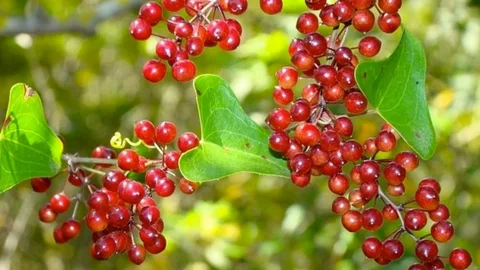
How Greenbrier Smilax Helps Wildlife and Other Plants
Greenbrier Smilax plays an important role in supporting wildlife. One of the key ways it helps animals is by providing a food source. The plant’s dark berries, produced in the fall, are a favorite snack for many bird species. These berries are rich in nutrients and help birds, especially in colder months, when food is harder to find. Animals such as raccoons, squirrels, and deer also benefit from the berries, using them as a food source when other options are limited. This makes Greenbrier Smilax an essential part of the food chain, helping to sustain wildlife throughout the year.
In addition to providing food, the dense vines of Greenbrier Smilax offer shelter to many smaller animals. The vines grow in thick, tangled clusters, creating a safe space for animals to hide from predators. Small mammals, like rabbits and mice, find protection in the vines, while birds use the plant’s structure to build nests. The sharp thorns of the plant make it difficult for larger animals to access the shelter, but smaller creatures can easily take advantage of the safe environment it provides. This makes Greenbrier Smilax a valuable protective resource for many species.
Greenbrier Smilax also benefits other plants by contributing to the overall biodiversity of an area. Its climbing nature allows it to spread across large areas, creating a green cover that supports a variety of life. As it grows, it provides a structure for other plants to grow on, which can encourage the development of different species. For example, other plants might grow up alongside Greenbrier Smilax, taking advantage of the support it offers. This encourages a more diverse plant community, which in turn supports a broader range of animal species.
Furthermore, Greenbrier Smilax helps to control the growth of invasive species. While it can sometimes spread aggressively, it competes with other plants, especially those that are invasive, for resources like sunlight and nutrients. By growing in areas where invasive species might dominate, Greenbrier Smilax can help maintain a more balanced ecosystem. Its ability to adapt to various environments allows it to coexist with a wide range of plants, preventing the overgrowth of non-native species and helping to preserve the health of the natural habitat.
Finally, the root system of Greenbrier Smilax plays a key role in maintaining soil health. The plant’s roots help to anchor the soil, preventing erosion and maintaining the integrity of the ground, especially in areas near water sources like streams or wetlands. By stabilizing the soil, the plant creates a healthier environment for other plants to grow, ensuring that the soil remains fertile and able to support a variety of plant life. This also benefits wildlife, as the stable soil supports a healthier and more diverse plant community, which, in turn, provides more food and shelter for animals.
Greenbrier Smilax: The Plant That Loves to Climb
Greenbrier Smilax is a true climber, and one of its most interesting features is its ability to grow vertically. Unlike many plants that stay close to the ground, Greenbrier Smilax uses its thick, flexible vines to climb up trees, shrubs, and other plants. It starts by sending out tendrils that latch onto nearby structures, allowing it to climb higher and higher as it searches for more sunlight. This climbing habit helps the plant compete for light in dense forests or other areas with thick vegetation. As it climbs, the plant becomes more noticeable and creates a striking green cover that can reach impressive heights.
The plant’s ability to climb not only helps it reach sunlight but also helps it spread across large areas. Greenbrier Smilax vines can stretch up to 20 feet long, wrapping around trees, fences, and even other plants. This characteristic allows the plant to quickly cover large sections of an area, providing shelter and food for wildlife. The vines create a dense layer of leaves and stems that can provide a safe environment for small animals. Birds, in particular, use the thick vines to build nests and find protection from predators. This climbing behavior makes Greenbrier Smilax a valuable addition to natural landscapes.
Greenbrier Smilax doesn’t just climb for survival—it also benefits other plants around it. As the vine climbs up trees and shrubs, it creates a unique environment where other plants can thrive. Its presence helps to stabilize the surrounding ecosystem by preventing erosion, especially in areas near water. The plant’s roots anchor the soil, keeping it in place and preventing it from washing away during heavy rains. This stability is especially important in places like riverbanks, wetlands, and forest floors, where soil erosion could disrupt the natural habitat.
One of the most striking things about Greenbrier Smilax is its ability to climb even in challenging environments. The plant doesn’t mind growing in shaded areas or places where the soil is not ideal. In fact, Greenbrier Smilax thrives in these conditions, making it a versatile climber that can adapt to various types of landscapes. Whether it’s in a sunny forest, a shady wetland, or along the edge of a trail, this plant can climb and establish itself in almost any environment, which is part of what makes it such a successful and widespread species.
As Greenbrier Smilax climbs, it creates a beautiful and intricate pattern in the landscape. The vines twist and wind their way up tree trunks, forming a maze of green leaves and branches. This growth pattern not only makes the plant visually interesting but also enhances the natural beauty of its surroundings. Whether you’re walking through a forest or exploring a nature trail, the sight of Greenbrier Smilax climbing its way upward is a reminder of how this plant thrives by reaching for the sky.
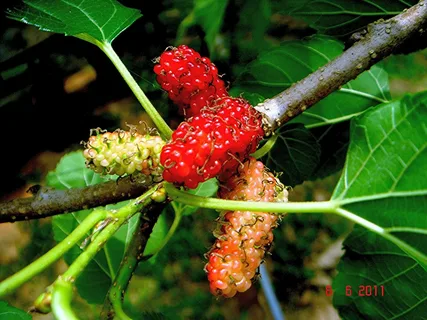
The Thorns of Greenbrier Smilax: Are They Dangerous?
Greenbrier Smilax is known for its thick, sharp thorns that cover its vines and stems. These thorns are one of the plant’s most noticeable features, and they serve an important purpose in nature. The thorns act as a defense mechanism, discouraging animals from eating the plant or disturbing its growth. When animals try to graze on Greenbrier Smilax, the sharp thorns make it difficult to get close to the plant, offering it some protection. While the thorns are effective at keeping larger animals away, smaller creatures may still find ways to use the plant for shelter or food.
Although the thorns of Greenbrier Smilax may seem intimidating, they are not necessarily dangerous to humans. While they can cause minor scratches or discomfort if touched, they are not poisonous or life-threatening. Most people who come into contact with the thorns will simply experience a scratch or prick on their skin. It is a good idea to be cautious when handling the plant, especially when walking through areas where it grows thickly, as the thorns can easily catch on clothing or skin. Wearing long sleeves and pants can help protect you from getting scratched while exploring areas where Greenbrier Smilax is abundant.
In the wild, the thorns of Greenbrier Smilax can be beneficial to the plant’s survival. They help to deter herbivores, such as deer and rabbits, from eating the leaves or stems. Without this defense, the plant would be more vulnerable to grazing animals that could damage it. The thorns also make it harder for larger animals to break through the dense vines, providing the plant with more protection. In this way, the thorns help Greenbrier Smilax to thrive and maintain its position in the ecosystem, giving it a better chance of survival.
However, for those who work or explore in areas where Greenbrier Smilax is common, it’s important to be aware of the thorns and take precautions. While the thorns are not deadly, they can still cause injury if not handled properly. Gardeners, hikers, and those working in the wild should take care when dealing with the plant. For instance, trimming back the vines with gloves or using tools to avoid contact with the thorns can help prevent accidental injury. It’s always a good idea to be prepared when dealing with plants that have sharp features like thorns.
In conclusion, while the thorns of Greenbrier Smilax can be sharp and unpleasant, they are not typically dangerous to humans. They are part of the plant’s natural defense system, helping to protect it from herbivores and other threats. As long as you handle the plant with care, there is no need to worry about the thorns causing significant harm. They are just another interesting feature of this versatile and resilient climbing plant.
How to Identify Greenbrier Smilax While Hiking
Identifying Greenbrier Smilax while hiking can be easy once you know what to look for. One of the most noticeable features of this plant is its climbing vines. Greenbrier Smilax often grows by wrapping its thick, flexible vines around trees, shrubs, and other plants. As you hike through forests, wetlands, or along trails, you’ll often see these vines creeping up tree trunks or spreading along the ground. The vines can grow long, sometimes reaching up to 20 feet, and they create a dense network that’s hard to miss.
Another important characteristic to look for when identifying Greenbrier Smilax is its sharp, thick thorns. These thorns are usually spread across the vines, making the plant look spiky and tough. The thorns can be small but are sharp enough to cause a scratch if you come into contact with them. They are an important feature to watch for, as they help protect the plant from grazing animals. If you see a vine with lots of thorns, it’s a good sign that you’ve found Greenbrier Smilax.
The leaves of Greenbrier Smilax are another key feature to help with identification. The leaves are typically glossy and dark green, and they are often oval or heart-shaped. Depending on the type of Greenbrier Smilax, the leaves can be slightly pointed at the tips. When you’re hiking, keep an eye out for clusters of these leaves growing along the vine. The leaves are usually spaced evenly, and they can help distinguish the plant from others in the area. If the leaves are still on the vine during your hike, it’s an easy way to spot Greenbrier Smilax.
In addition to the leaves and thorns, Greenbrier Smilax produces small, round berries in late summer or fall. These berries are dark blue or purple and can often be seen in clusters along the vines. If you’re hiking in late summer or fall, spotting the berries can help you identify Greenbrier Smilax even from a distance. Keep in mind that the berries are edible for many animals, including birds, so if you see wildlife nearby feeding on small blue or purple berries, it could be a sign that Greenbrier Smilax is growing in the area.
Finally, Greenbrier Smilax tends to grow in certain environments, so knowing where to look can help with identification. It thrives in woodlands, wetlands, and along trails where the soil is moist and the area is somewhat shaded. As you hike through these environments, pay attention to areas where the ground is soft, or near streams and rivers, as these are common places where Greenbrier Smilax grows. Once you recognize its growing habits and key features, identifying the plant will become easier during your hikes.
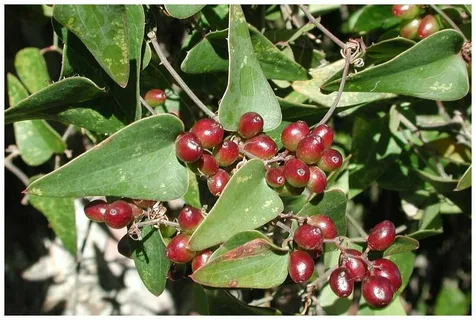
The History of Greenbrier Smilax: A Look at Its Origins
Greenbrier Smilax, like many plants in the wild, has a rich history rooted in its native habitats. This climbing vine, part of the Smilacaceae family, has been growing in forests and wetlands for centuries. While exact historical records on Greenbrier Smilax are limited, it is believed to have been around for a long time. Indigenous peoples in North America likely encountered this plant long before European settlers arrived, using it in various ways for survival. From the sharp thorns to the edible berries, Greenbrier Smilax would have played a role in their daily lives.
The plant is thought to have originally grown in the woodlands of North America, specifically in the eastern regions of the United States. Its adaptability to various soil types and climates allowed it to thrive in a range of environments, from dense forests to wetlands. Over time, Greenbrier Smilax spread to other parts of the continent, including the southern and central regions. Its climbing nature helped it dominate large areas, wrapping itself around trees and shrubs, creating thick, green coverings in its path. This expansion allowed the plant to become a common sight in many parts of the country.
Throughout its history, Greenbrier Smilax has been used by different cultures for practical purposes. Native Americans would often use the stems of the plant to make baskets, ropes, and even tools. The sharp thorns were also noted for their ability to be used in crafting, serving as natural needles or pins. In addition, the berries were sometimes used in food preparations, though they are not as commonly consumed today due to their bitter taste. Greenbrier Smilax was an important plant to those who lived close to the land, showcasing its value beyond just being a part of the ecosystem.
As settlers came to North America, they too recognized the value of Greenbrier Smilax, although they primarily saw it as a nuisance. Due to its fast-growing nature, it was often viewed as invasive by farmers and landowners. The vines would grow around crops, making it difficult to manage fields and gardens. However, as time went on, the plant’s resilience and ability to thrive in various environments made it a symbol of natural strength and endurance. People began to appreciate the plant’s role in local ecosystems and its ability to provide shelter and food for wildlife.
Today, Greenbrier Smilax is found all over North America, continuing to play a vital role in local ecosystems. While its exact historical journey may not be fully understood, its presence in the natural world is undeniable. From its historical uses by Native Americans to its modern-day role in ecosystems, Greenbrier Smilax has been a part of the landscape for many generations. As people continue to explore its uses and benefits, the history of Greenbrier Smilax remains a fascinating and valuable part of the plant’s story.
Greenbrier Smilax: Medicinal Uses and Benefits
Greenbrier Smilax has been used in traditional medicine for centuries, particularly by Native Americans and early settlers, who recognized its potential healing properties. The plant has long been valued for its roots, which are believed to have medicinal qualities. These roots contain compounds that have been used to treat a variety of ailments, from skin irritations to internal health issues. One of the most common uses of Greenbrier Smilax roots was to help with joint pain and inflammation, making it a popular remedy for conditions like arthritis.
In traditional herbal medicine, Greenbrier Smilax is often used as a natural anti-inflammatory. The root is thought to reduce swelling and ease the pain of sore muscles, joints, and even conditions like gout. It is sometimes prepared as a tea or tincture, with the active compounds believed to work by calming inflammation and promoting healing. People have used this plant to soothe joint stiffness and to support general mobility, offering a natural option for those seeking alternative remedies.
Greenbrier Smilax is also known for its detoxifying effects. It has been used in cleansing formulas to support the body’s natural detoxification processes. The plant is thought to help flush out toxins from the body, which can improve overall health and vitality. This detoxifying effect makes it a popular choice for people looking to support kidney and liver health, as these organs are crucial for filtering out harmful substances. Some people also believe that it can help promote clearer skin by removing impurities from the body.
Aside from its anti-inflammatory and detoxifying benefits, Greenbrier Smilax has also been used to improve energy levels and support the immune system. Its natural compounds are believed to help boost stamina and promote overall well-being. For centuries, people have turned to Greenbrier Smilax to combat fatigue and strengthen their immune response, making it a valuable plant in traditional healing practices. Whether used as a tonic or in herbal remedies, it has a reputation for helping people feel more energetic and resilient.
While Greenbrier Smilax has a rich history of medicinal uses, it’s important to note that modern scientific research on its benefits is still limited. As with any herbal remedy, it’s best to consult with a healthcare provider before using it for medicinal purposes. Though many people continue to use it for its potential healing properties, more studies are needed to fully understand its effects. Nonetheless, Greenbrier Smilax remains a fascinating plant with a long history of medicinal use and continues to be valued in herbal medicine for its natural benefits.
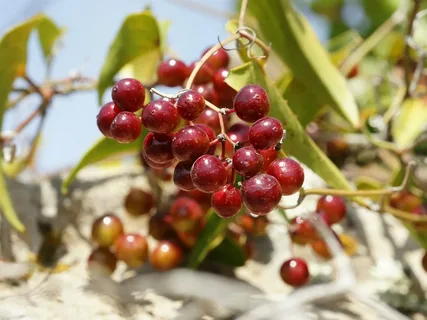
Why Greenbrier Smilax Is Important for the Environment
Greenbrier Smilax plays a crucial role in maintaining balance within the environment. As a climbing vine, it helps to create habitats for various species of wildlife, offering shelter and nesting sites for small animals, birds, and insects. The dense growth of Greenbrier Smilax provides cover and protection from predators, making it an essential part of many ecosystems. Its ability to quickly cover large areas and grow around trees creates dense thickets, which are highly valuable to animals that need safe places to hide or raise their young.
In addition to offering shelter, Greenbrier Smilax is an important food source for many creatures. The plant produces small berries that are eaten by birds and mammals alike. These berries are an excellent source of nutrition, especially during the late summer and fall when other food sources may be less abundant. Many species of birds, such as woodpeckers and sparrows, depend on Greenbrier Smilax berries as a primary food source, helping to sustain them during migration or before winter sets in.
Greenbrier Smilax also contributes to soil stabilization. Its extensive root system helps to prevent soil erosion, especially in areas where the ground may be prone to washing away during heavy rain or flooding. By anchoring the soil with its roots, Greenbrier Smilax helps protect the integrity of the land, ensuring that the ground remains stable and that water runoff is controlled. This soil stabilization is particularly beneficial in wetlands, where plants like Greenbrier Smilax help keep the landscape intact and prevent the loss of important habitat areas.
Furthermore, Greenbrier Smilax serves as a natural support for biodiversity. By creating dense, thorny patches, it fosters a variety of species interactions that wouldn’t occur in more open spaces. Its presence in the environment encourages different types of plant and animal species to thrive alongside one another. In areas where Greenbrier Smilax grows, you’ll often find a greater diversity of life, including insects, amphibians, and other plants that grow in the shaded, protected environment it creates. This helps sustain a balanced ecosystem, where each species plays a role in supporting others.
While Greenbrier Smilax is not without its challenges for land management, its overall contribution to the environment cannot be overstated. Its ability to provide food, shelter, and soil stability makes it a vital player in maintaining the health of many ecosystems. As more people become aware of the environmental importance of plants like Greenbrier Smilax, we can better appreciate their role in sustaining wildlife and promoting a healthy, diverse landscape.
Caring for Greenbrier Smilax: Can You Grow It in Your Garden?
Greenbrier Smilax can be a fascinating addition to any garden, especially for those interested in adding unique, climbing plants. Growing Greenbrier Smilax in your garden is possible, but it does require some attention and understanding of its needs. This plant thrives in well-drained soil and prefers areas with a lot of sunlight, although it can also tolerate some shade. If you want to grow Greenbrier Smilax successfully, make sure to plant it in a spot where it can climb, such as near a trellis, fence, or arbor. Its natural climbing habit will help it spread and grow, creating a beautiful and lush appearance.
To start growing Greenbrier Smilax, it’s important to ensure the soil conditions are right. This plant likes slightly acidic to neutral soil with good drainage. It is quite adaptable, but it grows best in soil that retains some moisture without becoming waterlogged. To help improve soil drainage, you can mix in organic matter like compost before planting. Make sure the planting site is not too dry or too wet, as Greenbrier Smilax needs a balance to thrive.
Once planted, Greenbrier Smilax is relatively low-maintenance, though it does require some care to keep it healthy. Regular watering is important, especially during dry spells, but overwatering should be avoided. The plant can grow quite vigorously, so it’s important to prune it regularly to prevent it from becoming too tangled or invasive. Pruning also helps the plant maintain its shape and encourages new growth. If left unchecked, Greenbrier Smilax can quickly spread over areas you don’t intend, so keep an eye on it and trim back any overgrown sections.
Fertilizing Greenbrier Smilax is usually not necessary, as it is a hardy plant that can thrive in a variety of conditions. However, if you want to encourage faster growth, a balanced fertilizer can be applied in the spring when new growth begins. Mulching around the base of the plant can also help keep the soil moist and cool, especially during hot summer months. While it is a tough plant, it’s still important to monitor it for pests or diseases, although Greenbrier Smilax is generally resistant to many common garden issues.
If you’re growing Greenbrier Smilax in your garden, be prepared for its climbing nature to make it a standout feature. Whether it’s winding up a fence or cascading over a trellis, this plant can add texture and beauty to any space. Just keep in mind that its thorns can be sharp, so take care when handling it. With the right care and attention, Greenbrier Smilax can thrive in your garden, providing both aesthetic value and a unique addition to your plant collection.
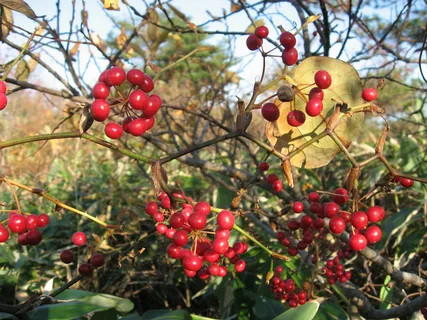
Conclusion
Greenbrier Smilax is a fascinating plant that has many unique features. From its sharp thorns to its ability to climb tall trees, this plant plays an important role in nature. It helps animals find shelter, and its berries provide food for many creatures. Whether you’re hiking in the forest or just learning about plants, Greenbrier Smilax is one you shouldn’t overlook.
In the end, Greenbrier Smilax is more than just a vine. It’s an essential part of the ecosystem, helping to keep the environment healthy. If you’re ever out exploring nature, keep an eye out for this special plant. Who knows, you might just spot it climbing up a tree or stretching across the ground!
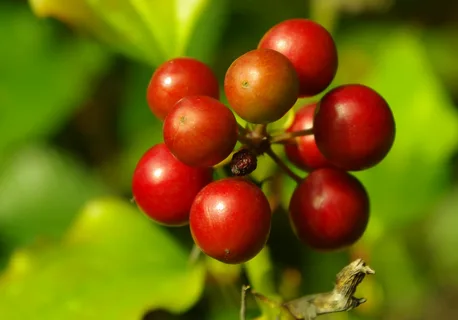













Post Comment